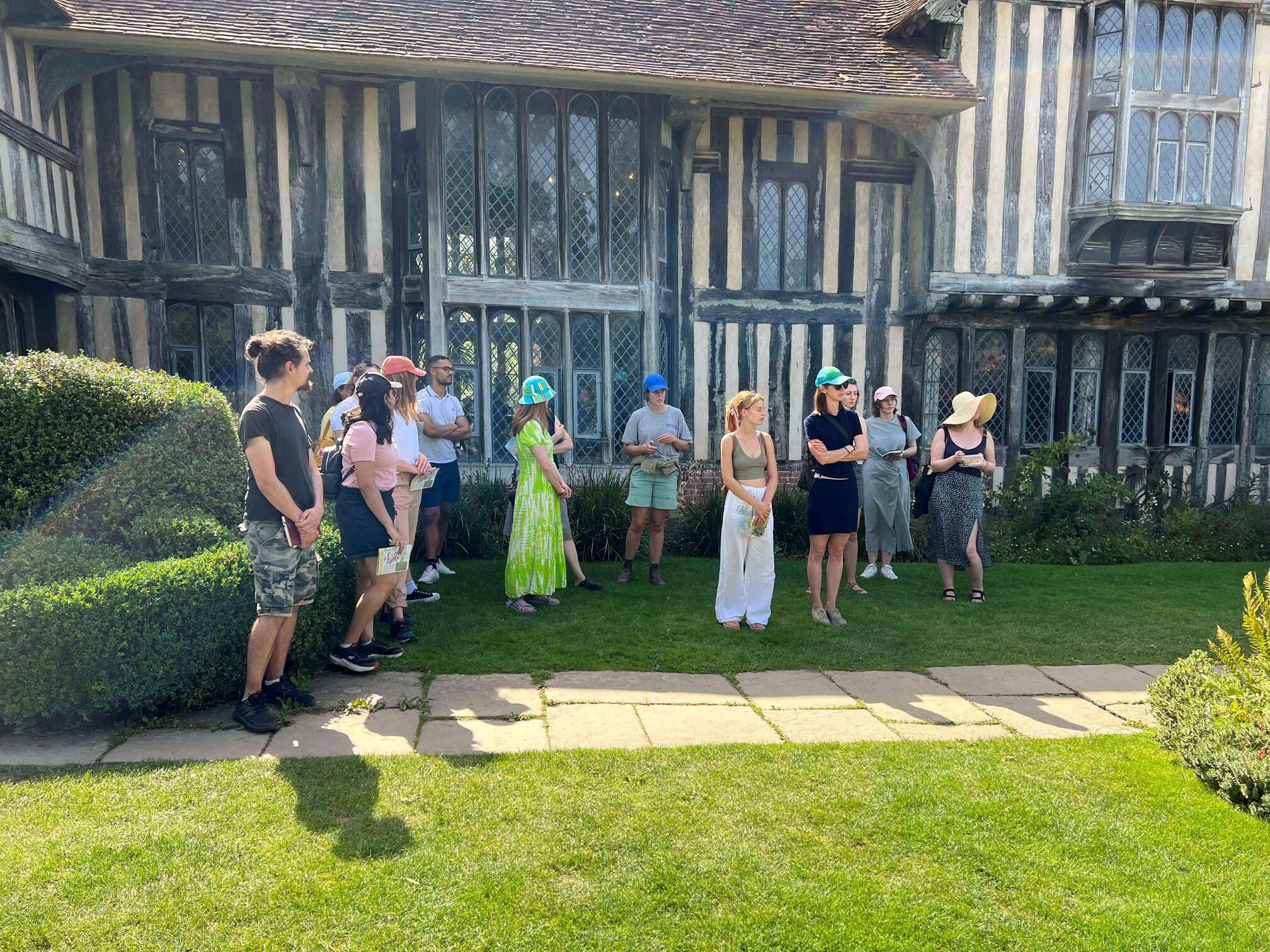For students, the week started with a session covering plant naming conventions, followed by a walk around Greenwich Park, looking at key features to help with plant identification. The park allowed students to collect plant material for a later identification test.

The second day started with an early trip, to Sissinghurst Castle Garden for an ‘early-bird’ tour before the general visitor was allowed entry. Referred to as “The most famous twentieth-century garden in England”, Sissinghurst was developed by the writer and poet Vita Sackville-West and her husband, Harold Nicholson.
The planting is predominantly of informal groupings to provide colour and texture themes, within a formal structure of ‘rooms’. It is often described as a romantic ‘refuge dedicated to beauty’. Knowledgeable guides provided a good sense of how the gardens developed from Tudor ruin to the present day, under the guidance of Vita and Harold.
The afternoon continued with a guided tour of the gardens of Great Dixter, under the care of Assistant Head Gardener Coralie Thomas. Great Dixter was the family home of gardener and garden writer, Christopher Lloyd students sensed his spirit in evidence under the stewardship of Fergus Garrett and the Great Dixter Charitable Trust.
It still remains a site of pilgrimage for horticulturists throughout the world. The formal garden layout, predominantly designed by Edwin Lutyens, provided a series of rooms within which Christopher was able to pursue his creativity in the pursuit of high-energy plant displays.
Within the garden, some of the floral displays are replaced three times each year to ensure a continuity of interest and appeal. The imperative of playing one plant off against another means that it is not uncommon to come across inspirational plant combinations.
On day three, students headed to the Sir Harold Hiller Gardens for a guided tour with Curator, David Jewell. This is a fantastic garden to really appreciate the value of different tree species in the landscape. Another aspect where the gardens excel is how they engage with different age groups, through their interpretation and education.
On the fourth day, students were taken on another guided tour, this time at Beth Chatto’s Garden. Here it is useful to be able to compare and contrast, at first hand, the different plant species used in creating the dry, Gravel Garden, the Water Garden and the Woodland Garden.
Students were expertly guided by Steve Marshall, who is Head of Horticulture and heard details of the amount of ‘curation’ involved in keeping the Gravel Garden looking so good, by not allowing the planting to be overcome with Verbascum and Stipa.
The most important take-away lessons here were the value of talking and listening to people and bare ground. The afternoon was a masterclass in how mounds of sand and demolition waste can be successfully used to increase biodiversity; valuable lessons for those designing urban landscapes.
University of Greenwich Landscape Architecture programmes encourage innovation and experimentation alongside practical approaches to allow students the freedom to develop cutting-edge and workable design solutions to some of today’s environmental and social challenges.
University of Greenwich Landscape Architecture: The Landscape Architecture and Urbanism programmes (BA, MA, MLA, MSc and PhD) at the University of Greenwich, London, are focused on the speculative design of future landscapes and cities informed by site-focused research and live projects. For information on Landscape Architecture programmes at the University of Greenwich, contact Duncan Goodwin: d.a.goodwin@gre.ac.uk

